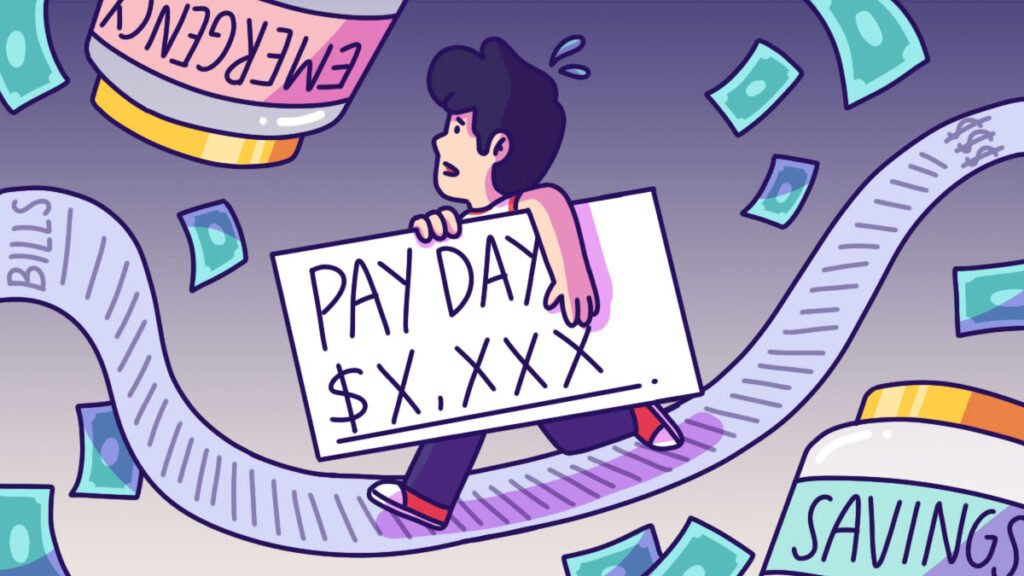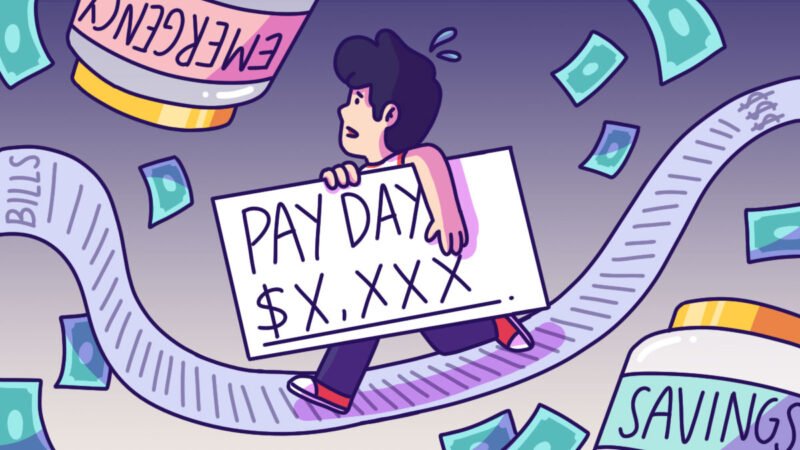Many people experience the same cycle on payday: checking the bank balance, feeling flush with cash, and then splurging on items they don’t need, leaving them broke just days later. This all-too-common pattern traps countless individuals in a cycle of financial mismanagement. But with a strategic payday routine, as outlined by Liam Porritt in his viral video, you can break free, build wealth, and achieve financial independence.
Here’s how you can turn your payday into a wealth-building opportunity that fosters long-term success.

Step 1: Realize You’re Not Rich
It’s payday. Your bank balance looks healthy. You feel like you’ve earned a splurge, but here’s the catch—just because you have money in your account doesn’t mean you’re financially free.
Porritt emphasizes that Payday Routine splurges are often fueled by the rush of dopamine we get from spending money. Whether it’s a new gadget or a fancy dinner, these short-term thrills can sabotage long-term wealth building. It’s essential to break this mindset and remind yourself that the goal isn’t just to survive until the next payday but to thrive financially in the future.
Action Step: Mentally commit to viewing payday not as a windfall, but as part of your journey to financial independence. This will help you resist the impulse to splurge and focus on long-term goals.
Step 2: Maximize Tax Benefits
One of the biggest mistakes people make is ignoring the tax-saving opportunities that come with their salary. Porritt suggests looking for ways to reduce your taxable income—chiefly through pension or retirement contributions.
For those in the U.S., maximizing your 401(k) or IRA contributions can lead to significant tax savings. Many employers match contributions up to a certain percentage. By not taking full advantage of this, you’re essentially leaving free money on the table.
Action Step: Research how much your employer will match in retirement contributions and contribute at least that amount to your pension or 401(k). In addition to boosting your savings, this reduces your tax bill, giving you more room to save and invest.
Step 3: Automate Your Accounts
Managing your Payday Routine effectively requires some automation. Porritt advocates using multiple accounts—one for needs (fixed expenses like rent and utilities), one for wants (discretionary spending like dining out or vacations), and one for saving and investing.
Automation is key to ensuring consistency and discipline. By setting up automatic transfers from your main account to your designated needs, wants, and savings accounts, you remove the temptation to overspend.
Action Step: Set up a system of automatic transfers the moment your salary hits your account. Direct a portion to your needs, a portion to your wants, and allocate a fixed percentage toward savings and investments.
Step 4: Pay Off High-Interest Debt
Debt is one of the greatest obstacles to financial growth. High-interest credit card debt or payday loans can eat away at your paycheck long after payday has passed. Prioritize paying off these debts immediately.
Porritt mentions that he uses credit cards only for large purchases or travel to take advantage of points, but always pays them off within days. If you have existing debt, paying it off as quickly as possible is critical to preventing high interest from accumulating.
Action Step: Review all your debt obligations. Prioritize paying off high-interest debt, like credit cards or payday loans, before making any discretionary purchases.
Step 5: Pay Yourself First
The concept of “paying yourself first” is a timeless piece of financial wisdom, and Porritt reinforces its importance. Instead of spending first and saving whatever is left, commit to saving a fixed percentage of your income as soon as you’re paid.
He recommends setting aside at least 20% of your income for savings and investments. By making this your first financial move on payday, you’re prioritizing long-term wealth-building.
Action Step: Allocate at least 20% of your paycheck to savings or investments before you spend on anything else. Automating this will help build discipline.
Step 6: Build an Emergency Fund
Having an emergency fund is a cornerstone of financial security. Porritt suggests setting aside enough money to cover 6-9 months’ worth of living expenses in a separate, easily accessible account.
This fund ensures that you’re protected in case of a job loss, medical emergency, or other unforeseen financial challenges. Without this buffer, people often resort to high-interest loans or credit card debt, putting them further behind financially.
Action Step: Calculate your monthly expenses and multiply that by 6 or 9 to determine how much you need in your emergency fund. Build this fund before focusing on other long-term investments.
Step 7: Save for Long-Term Goals
Once you’ve secured an emergency fund, it’s time to focus on saving for long-term goals—whether that’s a down payment on a home, starting a business, or taking a dream vacation.
Porritt recommends using tax-efficient savings vehicles, such as Lifetime ISAs in the UK or Roth IRAs in the U.S., to save for these goals. The added benefit of tax-free growth can significantly accelerate your savings.
Action Step: Identify your long-term goals and start allocating funds toward them using tax-efficient accounts.
Step 8: Invest for the Future
Building wealth doesn’t just happen through saving—it also requires smart investing. Porritt highlights the importance of investing at least 5-20% of your income into diversified assets like exchange-traded funds (ETFs).
ETFs are a great way to invest in a broad range of stocks with relatively low fees and risk. For those new to investing, automated platforms like robo-advisors or apps like FreeTrade can help streamline the process.
Action Step: Choose an investment platform that suits your needs and begin investing in low-cost, diversified funds like ETFs. Even small, consistent contributions can grow significantly over time.
Step 9: Consistency is Key
The most important part of any payday routine is consistency. Sticking to a disciplined financial plan month after month will gradually build your wealth and help you achieve financial independence. It’s easy to fall off track, especially when tempted by short-term spending, but with an automated system, you can stay focused on your long-term goals.
Action Step: Review your finances regularly—every three to six months—to ensure your payday routine still aligns with your financial goals. Adjust your spending, savings, and investments based on any changes in your life or the economy.
Liam Porritt’s payday routine is simple yet incredibly powerful. By automating savings, paying off debt, and investing wisely, he’s grown his net worth from negative £50,000 to over £250,000. This system can work for anyone, regardless of salary, if applied with discipline and consistency.
If you’re looking to break the cycle of living paycheck to paycheck, adopting these steps will put you on the path to financial independence.
For more tips on building financial habits that enhance your productivity and personal wealth, follow us at Productivty.com!







